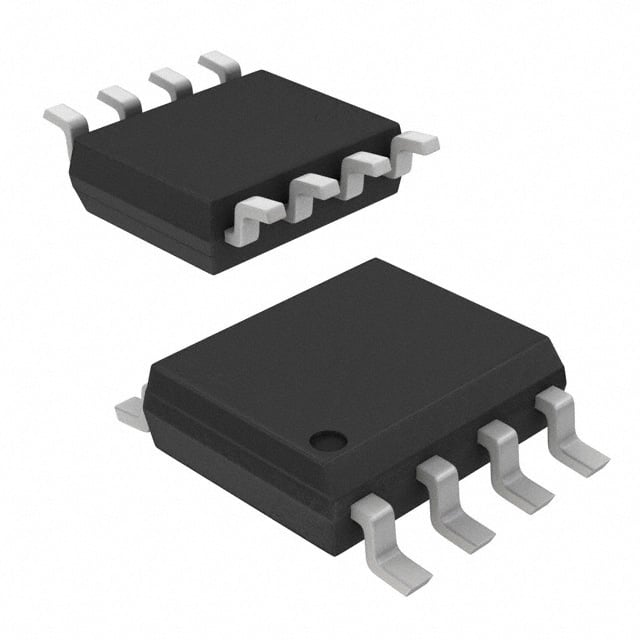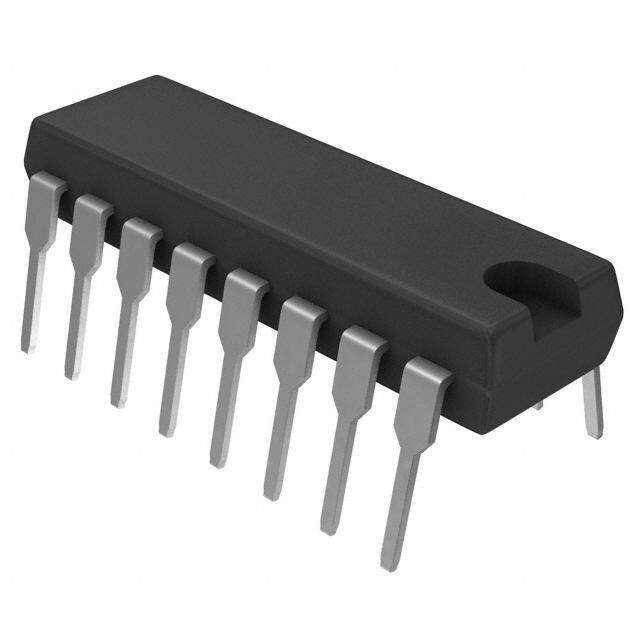ICGOO在线商城 > 集成电路(IC) > 接口 - 驱动器,接收器,收发器 > ISL3158AEMBZ-T7A
- 型号: ISL3158AEMBZ-T7A
- 制造商: Intersil
- 库位|库存: xxxx|xxxx
- 要求:
| 数量阶梯 | 香港交货 | 国内含税 |
| +xxxx | $xxxx | ¥xxxx |
查看当月历史价格
查看今年历史价格
ISL3158AEMBZ-T7A产品简介:
ICGOO电子元器件商城为您提供ISL3158AEMBZ-T7A由Intersil设计生产,在icgoo商城现货销售,并且可以通过原厂、代理商等渠道进行代购。 ISL3158AEMBZ-T7A价格参考。IntersilISL3158AEMBZ-T7A封装/规格:接口 - 驱动器,接收器,收发器, 半 收发器 1/1 RS422,RS485 8-SOIC。您可以下载ISL3158AEMBZ-T7A参考资料、Datasheet数据手册功能说明书,资料中有ISL3158AEMBZ-T7A 详细功能的应用电路图电压和使用方法及教程。
| 参数 | 数值 |
| 产品目录 | 集成电路 (IC) |
| 描述 | IC LINEAR |
| 产品分类 | |
| 品牌 | Intersil |
| 数据手册 | |
| 产品图片 |
|
| 产品型号 | ISL3158AEMBZ-T7A |
| rohs | 无铅 / 符合限制有害物质指令(RoHS)规范要求 |
| 产品系列 | - |
| 供应商器件封装 | 8-SOIC |
| 其它名称 | ISL3158AEMBZ-T7ACT |
| 包装 | 剪切带 (CT) |
| 协议 | RS422,RS485 |
| 双工 | 半 |
| 安装类型 | 表面贴装 |
| 封装/外壳 | 8-SOIC(0.154",3.90mm 宽) |
| 工作温度 | -55°C ~ 125°C |
| 接收器滞后 | 20mV |
| 数据速率 | 10Mbps |
| 标准包装 | 1 |
| 电压-电源 | 4.5 V ~ 5.5 V |
| 类型 | 收发器 |
| 驱动器/接收器数 | 1/1 |




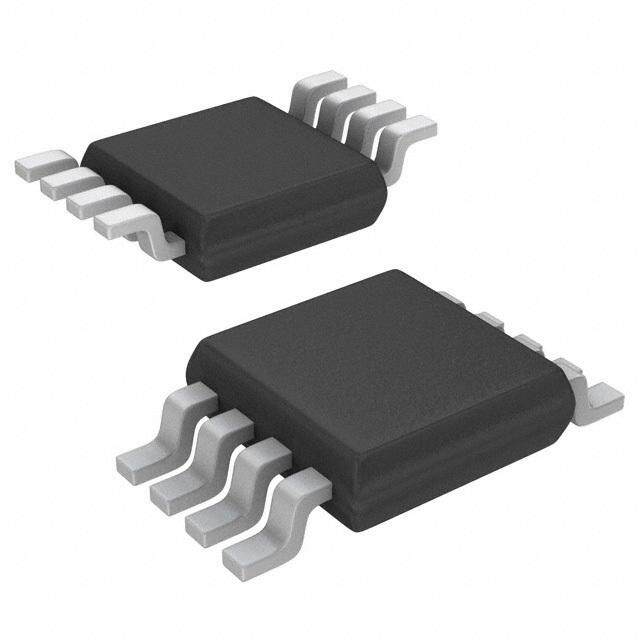



- 商务部:美国ITC正式对集成电路等产品启动337调查
- 曝三星4nm工艺存在良率问题 高通将骁龙8 Gen1或转产台积电
- 太阳诱电将投资9.5亿元在常州建新厂生产MLCC 预计2023年完工
- 英特尔发布欧洲新工厂建设计划 深化IDM 2.0 战略
- 台积电先进制程称霸业界 有大客户加持明年业绩稳了
- 达到5530亿美元!SIA预计今年全球半导体销售额将创下新高
- 英特尔拟将自动驾驶子公司Mobileye上市 估值或超500亿美元
- 三星加码芯片和SET,合并消费电子和移动部门,撤换高东真等 CEO
- 三星电子宣布重大人事变动 还合并消费电子和移动部门
- 海关总署:前11个月进口集成电路产品价值2.52万亿元 增长14.8%
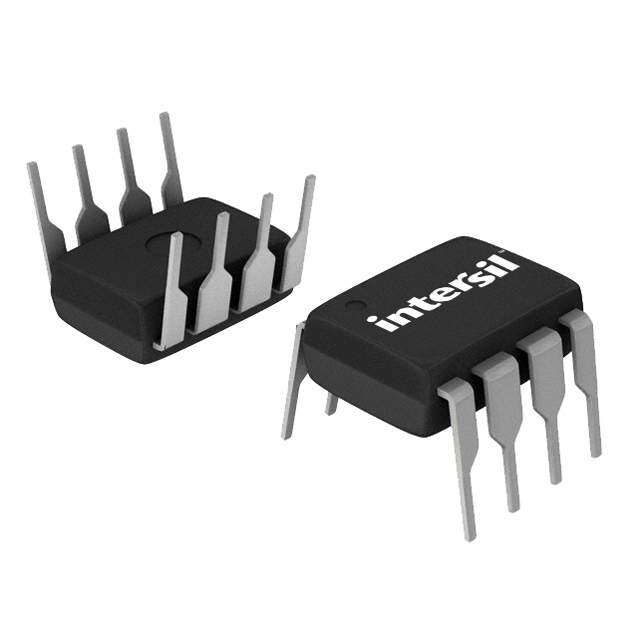



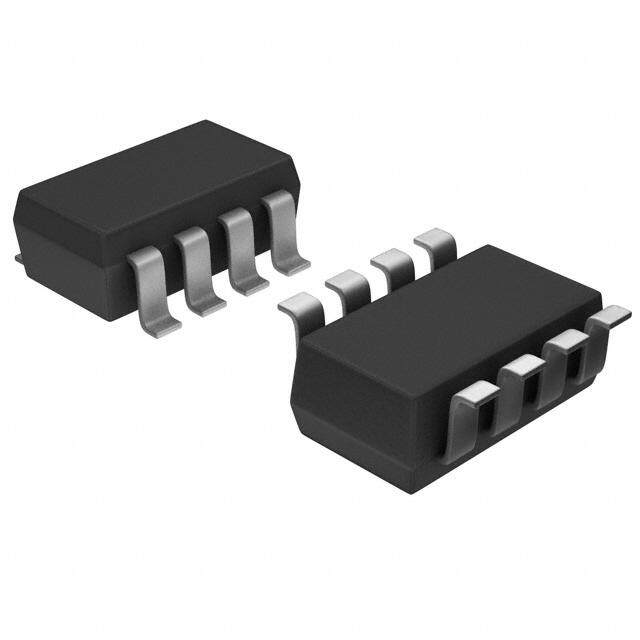



PDF Datasheet 数据手册内容提取
DATASHEET POSSIOBBLSEO SLUIESBTLSE3T 1PIT5R8UOETDEU PCRTODUCT ISL3158AE FN6886 ±16.5kV ESD (IEC61000-4-2) Protected, Large Output Swing, 5V, Full Fail-Safe, Rev 1.00 1/8 Unit Load, RS-485/RS-422 Transceiver October 15, 2013 The ISL3158AE is a BiCMOS, IEC61000 ESD protected, 5V Features powered, single transceiver that meets both the RS-485 and RS-422 standards for balanced communication. Each driver • High Driver VOD. . . . . . . . . . . . . .2.4V (Min) @ RD = 54 output and receiver input is protected against ±16.5kV ESD - Better Noise Immunity, or Drive Up to 8 Terminations strikes without latch-up. • IEC61000 ESD Protection on RS-485 I/O Pins . . ±16.5kV The ISL3158AE transmitter delivers exceptional differential - Class 3 ESD Level on all Other Pins . . . . . . >7kV HBM output voltages (2.4V min), into the RS-485 required 54 • Full Fail-safe (Open, Short, Terminated and Undriven) load, for better noise immunity or to allow up to eight 120 Receivers terminations in “star” or other non-standard bus topologies. • High Rx IOL to Drive Opto-Couplers for Isolated This device has very low bus currents (+125µA/-75µA), so it Applications presents a true “1/8 unit load” to the RS-485 bus. This allows • Hot Plug Circuitry - Tx and Rx Outputs Remain up to 256 transceivers on the network without violating the Three-State During Power-up/Power-down RS-485 specification’s 32 unit load maximum, and without • True 1/8 Unit Load Allows up to 256 Devices on the Bus using repeaters. • Specified for Single 5V, 10% Tolerance, Supplies Receiver (Rx) inputs feature a “Full Fail-Safe” design, which ensures a logic high Rx output if Rx inputs are floating, • High Data Rates. . . . . . . . . . . . . . . . . . . . . up to 10Mbps shorted, or on a terminated but undriven bus. Rx outputs • Low Quiescent Supply Current . . . . . . . . . . . . . . . .600µA feature high drive levels - typically 28mA @ VOL = 1V (to Ultra Low Shutdown Supply Current . . . . . . . . . . . . .70nA ease the design of optocoupled isolated interfaces). • -7V to +12V Common Mode Input Voltage Range Hot Plug circuitry ensures that the Tx and Rx outputs remain • Half Duplex Pinouts in a high impedance state until the power supply has stabilized, and the Tx outputs are fully short circuit protected. • Pb-free (RoHS compliant) The ISL3158AE is a half duplex version. It multiplexes the • Three-State Rx and Tx Outputs Rx inputs and Tx outputs to allow transceivers with output • Current Limiting for Driver Overload Protection disable functions in an 8 Ld package. Applications • Utility Meters and Automated Meter Reading Systems • High Node Count Systems • PROFIBUS® and Field Bus Networks, and Factory Automation • Security Camera Networks • Building Lighting and Environmental Control Systems • Industrial/Process Control Networks TABLE 1. SUMMARY OF FEATURES PART HALF/FUL DATA RATE SLEW-RATE # DEVICES Rx/Tx QUIESCENT LOW POWER PIN NUMBER L DUPLEX (Mbps) LIMITED? HOT PLUG ON BUS ENABLE? ICC (µA) SHUTDOWN? COUNT ISL3158AEM Half 10 No Yes 256 Yes 600 Yes 8 ISL3158AEMW Half 10 No Yes 256 Yes 600 Yes N/A FN6886 Rev 1.00 Page 1 of 16 October 15, 2013
ISL3158AE Pinout ISL3158AE (8 LD SOIC) TOP VIEW RO 1 8 VCC R RE 2 7 B/Z DE 3 6 A/Y DI 4 D 5 GND Ordering Information PART NUMBER PART TEMP. RANGE PACKAGE PKG. (Notes 2, 3) MARKING (°C) (Pb-Free) DWG. # ISL3158AEMBZ (Note 1) 3158A EMBZ -55 to +125 8 Ld SOIC M8.15 ISL3158AEMW -55 to +125 Wafer NOTES: 1. Add “-T*” suffix for tape and reel. Please refer to TB347 for details on reel specifications. 2. These Intersil Pb-free plastic packaged products employ special Pb-free material sets, molding compounds/die attach materials, and 100% matte tin plate plus anneal (e3 termination finish, which is RoHS compliant and compatible with both SnPb and Pb-free soldering operations). Intersil Pb-free products are MSL classified at Pb-free peak reflow temperatures that meet or exceed the Pb-free requirements of IPC/JEDEC J STD-020. 3. For Moisture Sensitivity Level (MSL), please see device information page for ISL3158AE. For more information on MSL, please see tech brief TB363. FN6886 Rev 1.00 Page 2 of 16 October 15, 2013
ISL3158AE Truth Tables RECEIVING TRANSMITTING INPUTS OUTPUT INPUTS OUTPUTS RE DE DE A-B RO Half Duplex Full Duplex RE DE DI Z Y 0 0 X -0.05V 1 X 1 1 0 1 0 0 X -0.2V 0 X 1 0 1 0 0 0 X Inputs 1 0 0 X High-Z High-Z Open/Shorted 1 0 X High-Z* High-Z* 1 0 0 X High-Z* NOTE: *Shutdown Mode (See Note 10). 1 1 1 X High-Z NOTE: *Shutdown Mode (See Note 10). Pin Descriptions PIN FUNCTION RO Receiver output: If A-B -50mV, RO is high; If A-B -200mV, RO is low; RO = High if A and B are unconnected (floating) or shorted. RE Receiver output enable. RO is enabled when RE is low; RO is high impedance when RE is high. DE Driver output enable. The driver outputs, Y and Z, are enabled by bringing DE high. They are high impedance when DE is low. DI Driver input. A low on DI forces output Y low and output Z high. Similarly, a high on DI forces output Y high and output Z low. GND Ground connection. A/Y ±16.5kV IEC61000 ESD Protected RS-485/RS-422 level, non-inverting receiver input and noninverting driver output. Pin is an input if DE=0; pin is an output if DE = 1. B/Z ±16.5kV IEC61000 ESD Protected RS-485/RS-422 level, inverting receiver input and inverting driver output. Pin is an input if DE =0; pin is an output if DE = 1. VCC System power supply input (4.5V to 5.5V). FN6886 Rev 1.00 Page 3 of 16 October 15, 2013
ISL3158AE Typical Operating Circuit ISL3158AE +5V +5V + + 0.1µF 0.1µF 8 8 VCC VCC 1 RO R D DI 4 2 RE B/Z 7 RT RT 7 B/Z DE 3 3 DE A/Y 6 6 A/Y RE 2 4 DI RO 1 D R GND GND 5 5 FN6886 Rev 1.00 Page 4 of 16 October 15, 2013
ISL3158AE Absolute Maximum Ratings Thermal Information VCC to Ground. . . . . . . . . . . . . . . . . . . . . . . . . . . . . . . . . . . . . . . 7V Thermal Resistance (Typical, Note 4) JA (°C/W) Input Voltages 8 Ld SOIC . . . . . . . . . . . . . . . . . . . . . . . . . . . . . . . . 120 DI, DE, RE . . . . . . . . . . . . . . . . . . . . . . . . . -0.3V to (VCC + 0.3V) Maximum Junction Temperature (Plastic Package) . . . . . . +150°C Input/Output Voltages Maximum Storage Temperature Range. . . . . . . . . .-65°C to +150°C A/Y, B/Z . . . . . . . . . . . . . . . . . . . . . . . . . . . . . . . . . . . -9V to +13V Pb-Free Reflow Profile. . . . . . . . . . . . . . . . . . . . . . . . .see link below A/Y, B/Z (Transient Pulse Through 100) . . . . . . . . . . . . . . ±25V http://www.intersil.com/pbfree/Pb-FreeReflow.asp RO . . . . . . . . . . . . . . . . . . . . . . . . . . . . . . . . -0.3V to (VCC +0.3V) Short Circuit Duration Operating Conditions Y, Z. . . . . . . . . . . . . . . . . . . . . . . . . . . . . . . . . . . . . . . Continuous ESD Rating . . . . . . . . . . . . . . . . . . . . . . . . See Specifications Table Temperature Range. . . . . . . . . . . . . . . . . . . . . . . . .-55°C to +125°C CAUTION: Do not operate at or near the maximum ratings listed for extended periods of time. Exposure to such conditions may adversely impact product reliability and result in failures not covered by warranty. NOTE: 4. JA is measured with the component mounted on a high effective thermal conductivity test board in free air. See Tech Brief TB379 for details. Electrical Specifications Test Conditions: VCC = 4.5V to 5.5V; Unless Otherwise Specified. Typicals are at VCC = 5V, TA = +25°C (Note5). Parameters with MIN and/or MAX limits are 100% tested at +25°C, unless otherwise specified. Temperature limits established by characterization and are not production tested. TEMP PARAMETER SYMBOL TEST CONDITIONS (°C) MIN TYP MAX UNITS DC CHARACTERISTICS Driver Differential VOUT (No load) VOD1 Full - - VCC V Driver Differential VOUT (Loaded) VOD2 RL = 100 (RS-422) (Figure 1A) Full 2.8 3.6 - V RL = 54 (RS-485) (Figure 1A) Full 2.4 3.1 VCC V RL = 15 (Eight 120 terminations) (Note 13) 25 - 1.65 - V RL = 60, -7V VCM 12V (Figure 1B) Full 2.4 3 - V Change in Magnitude of Driver VOD RL = 54 or 100 (Figure 1A) Full - 0.01 0.2 V Differential VOUT for Complementary Output States Driver Common-Mode VOUT VOC RL = 54 or 100 (Figure 1A) Full - - 3.15 V Change in Magnitude of Driver VOC RL = 54 or 100 (Figure 1A) Full - 0.01 0.2 V Common-Mode VOUT for Complementary Output States Logic Input High Voltage VIH DE, DI, RE Full 2 - - V Logic Input Low Voltage VIL DE, DI, RE Full - - 0.8 V DI Input Hysteresis Voltage VHYS 25 - 100 - mV Logic Input Current IIN1 DE, DI, RE Full -2 - 2 µA Input Current (A/Y, B/Z) IIN2 DE = 0V, VCC = 0V or 5.5V VIN = 12V Full - 70 125 µA VIN = -7V Full -75 55 - µA Driver Short-Circuit Current, IOSD1 DE = VCC, -7V VY or VZ 12V (Note 7) Full - - ±250 mA VO = High or Low Receiver Differential Threshold VTH -7V VCM 12V (Note 15) Full -200 -90 -50 mV Voltage Receiver Input Hysteresis VTH VCM = 0V 25 - 20 - mV Receiver Output High Voltage VOH IO = -8mA, VID = -50mV Full VCC - 1.2 4.3 - V Receiver Output Low Voltage VOL IO = -8mA, VID = -200mV Full - 0.25 0.5 V Receiver Output Low Current IOL VO = 1V, VID = -200mV Full 15 28 - mA FN6886 Rev 1.00 Page 5 of 16 October 15, 2013
ISL3158AE Electrical Specifications Test Conditions: VCC = 4.5V to 5.5V; Unless Otherwise Specified. Typicals are at VCC = 5V, TA = +25°C (Note5). Parameters with MIN and/or MAX limits are 100% tested at +25°C, unless otherwise specified. Temperature limits established by characterization and are not production tested. (Continued) TEMP PARAMETER SYMBOL TEST CONDITIONS (°C) MIN TYP MAX UNITS Three-State (High Impedance) IOZR 0.4V VO 2.4V Full -1 0.03 1 µA Receiver Output Current Receiver Input Resistance RIN -7V VCM 12V Full 96 160 - k Receiver Short-Circuit Current IOSR 0V VO VCC Full ±7 65 ±85 mA SUPPLY CURRENT No-Load Supply Current (Note 6) ICC Half Duplex Versions, DE = VCC, RE = X, Full - 650 800 µA DI = 0V or VCC All Versions, DE = 0V, RE = 0V, or Full Duplex Full - 550 700 µA Versions, DE = VCC, RE = X. DI = 0V or VCC Shutdown Supply Current ISHDN DE = 0V, RE = VCC, DI = 0V or VCC Full - 0.07 3 µA ESD PERFORMANCE RS-485 Pins (A/Y, B/Z) IEC61000-4-2, Air-Gap 1/2 Duplex 25 - ±16.5 - kV Discharge Method IEC61000-4-2, Contact Discharge Method 25 - ±9 - kV Human Body Model, From Bus Pins to GND 25 - ±16.5 - kV All Pins Human Body Model, per MIL-STD-883 Method 25 - ±7 - kV 3015 Machine Model 25 - 400 - V DRIVER SWITCHING CHARACTERISTICS (ISL3158AE) Driver Differential Output Delay tPLH, tPHL RDIFF = 54, CL = 100pF (Figure 2) Full - 21 30 ns Driver Differential Output Skew tSKEW RDIFF = 54, CL = 100pF (Figure 2) Full - 0.2 3 ns Driver Differential Rise or Fall Time tR, tF RDIFF = 54, CL = 100pF (Figure 2) Full - 12 16 ns Maximum Data Rate fMAX CD = 470pF (Figure 4), (Note 15) Full - 10 - Mbps Driver Enable to Output High tZH RL = 500, CL = 100pF, SW = GND (Figure 3), Full - 30 45 ns (Note 8) Driver Enable to Output Low tZL RL = 500, CL = 100pF, SW = VCC (Figure 3), Full - 28 45 ns (Note 8) Driver Disable from Output Low tLZ RL = 500, CL = 15pF, SW = VCC (Figure 3) Full - 50 65 ns Driver Disable from Output High tHZ RL = 500, CL = 15pF, SW = GND (Figure 3) Full - 38 65 ns Time to Shutdown tSHDN (Notes 10, 15) Full - 160 - ns Driver Enable from Shutdown to tZH(SHDN) RL = 500, CL = 100pF, SW = GND (Figure 3), Full - - 200 ns Output High (Notes 10, 11) Driver Enable from Shutdown to tZL(SHDN) RL = 500, CL = 100pF, SW = VCC (Figure 3), Full - - 200 ns Output Low (Notes 10, 11) RECEIVER SWITCHING CHARACTERISTICS (ISL3158AE) Maximum Data Rate fMAX (Figure 5) (Note 15) Full - 10 - Mbps Receiver Input to Output Delay tPLH, tPHL (Figure 5) Full - 33 50 ns Receiver Skew | tPLH - tPHL | tSKD (Figure 5) Full - 2.5 5 ns Receiver Enable to Output Low tZL RL = 1k, CL = 15pF, SW = VCC (Figure 6), Full - 8 15 ns (Note 9) FN6886 Rev 1.00 Page 6 of 16 October 15, 2013
ISL3158AE Electrical Specifications Test Conditions: VCC = 4.5V to 5.5V; Unless Otherwise Specified. Typicals are at VCC = 5V, TA = +25°C (Note5). Parameters with MIN and/or MAX limits are 100% tested at +25°C, unless otherwise specified. Temperature limits established by characterization and are not production tested. (Continued) TEMP PARAMETER SYMBOL TEST CONDITIONS (°C) MIN TYP MAX UNITS Receiver Enable to Output High tZH RL = 1k, CL = 15pF, SW = GND (Figure 6), Full - 7 15 ns (Note 9) Receiver Disable from Output Low tLZ RL = 1k, CL = 15pF, SW = VCC (Figure 6) Full - 8 15 ns Receiver Disable from Output High tHZ RL = 1k, CL = 15pF, SW = GND (Figure 6) Full - 8 15 ns Time to Shutdown tSHDN (Notes 10, 15) Full 60 160 600 ns Receiver Enable from Shutdown to tZH(SHDN) RL = 1k, CL = 15pF, SW = GND (Figure 6), Full - - 200 ns Output High (Notes 10, 12) Receiver Enable from Shutdown to tZL(SHDN) RL = 1k, CL = 15pF, SW = VCC (Figure 6), Full - - 200 ns Output Low (Notes 10, 12) NOTES: 5. All currents into device pins are positive; all currents out of device pins are negative. All voltages are referenced to device ground unless otherwise specified. 6. Supply current specification is valid for loaded drivers when DE = 0V. 7. Applies to peak current. See “Typical Performance Curves” beginning on page12 for more information. 8. Keep RE = 0 to prevent the device from entering SHDN. 9. The RE signal high time must be short enough (typically <100ns) to prevent the device from entering SHDN. 10. Transceivers are put into shutdown by bringing RE high and DE low. If the inputs are in this state for less than 60ns, the parts are guaranteed not to enter shutdown. If the inputs are in this state for at least 600ns, the parts are guaranteed to have entered shutdown. See “Low Power Shutdown Mode” on page11. 11. Keep RE = VCC, and set the DE signal low time >600ns to ensure that the device enters SHDN. 12. Set the RE signal high time >600ns to ensure that the device enters SHDN. 13. See Figure 8 for more information, and for performance over-temperature. 14. For wafer sale, the switching test limits are established by characterization. 15. Limits established by characterization and are not production tested. Test Circuits and Waveforms VCC DE RL/2 VCC DE 375 DI D Z VOD DI D Z VOD RL = 60 -7V TOV C+1M2 V Y Y RL/2 VOC 375 FIGURE 1A. VOD AND VOC FIGURE 1B. VOD WITH COMMON MODE LOAD FIGURE 1. DC DRIVER TEST CIRCUITS FN6886 Rev 1.00 Page 7 of 16 October 15, 2013
ISL3158AE Test Circuits and Waveforms (Continued) 3V DI 1.5V 1.5V 0V tPLH tPHL OUT (Z) VOH CL = 100pF VCC DE OUT (Y) VOL DI Z D RDIFF 90% 90% +VOD Y CL = 100pF DIFF OUT (Y - Z) 10% 10% SIGNAL -VOD GENERATOR tR tF SKEW = |tPLH - tPHL| FIGURE 2A. TEST CIRCUIT FIGURE 2B. MEASUREMENT POINTS FIGURE 2. DRIVER PROPAGATION DELAY AND DIFFERENTIAL TRANSITION TIMES DE DI Z 500 VCC D SIGNAL Y SW GND GENERATOR CL 3V DE 1.5V 1.5V NOTE 7 0V PARAMETER OUTPUT RE DI SW CL (pF) tZH, tZH(SHDN) tHZ tHZ Y/Z X 1/0 GND 15 NOTE 7 OUTPUT HIGH VOH - 0.5V VOH tLZ Y/Z X 0/1 VCC 15 OUT (Y, Z) 2.3V 0V tZH Y/Z 0 (Note 8) 1/0 GND 100 tZL Y/Z 0 (Note 8) 0/1 VCC 100 tZL, tZL(SHDN) tLZ tZH(SHDN) Y/Z 1 (Note 11) 1/0 GND 100 NOTE 7 VCC OUT (Y, Z) 2.3V tZL(SHDN) Y/Z 1 (Note 11) 0/1 VCC 100 VOL + 0.5V VOL OUTPUT LOW FIGURE 3A. TEST CIRCUIT FIGURE 3B. MEASUREMENT POINTS FIGURE 3. DRIVER ENABLE AND DISABLE TIMES DE VCC + 3V DI Z DI D 60 CD VOD 0V Y - SIGNAL GENERATOR DIFF OUT (Y - Z) +VOD 0V -VOD FIGURE 4A. TEST CIRCUIT FIGURE 4B. MEASUREMENT POINTS FIGURE 4. DRIVER DATA RATE FN6886 Rev 1.00 Page 8 of 16 October 15, 2013
ISL3158AE Test Circuits and Waveforms (Continued) RE +1.5V B 15pF A 0V 0V 0V RO A R -1.5V tPLH tPHL SIGNAL VCC GENERATOR RO 1.5V 1.5V 0V FIGURE 5A. TEST CIRCUIT FIGURE 5B. MEASUREMENT POINTS FIGURE 5. RECEIVER PROPAGATION DELAY AND DATA RATE RE GND B RO 1k VCC A R SGIEGNNEARLATOR 15pF SW GND NOTE 7 3V RE 1.5V 1.5V 0V PARAMETER DE A SW tZH, tZH(SHDN) tHZ NOTE 7 OUTPUT HIGH tHZ 0 +1.5V GND VOH - 0.5V VOH RO 1.5V tLZ 0 -1.5V VCC 0V tZH (Note 9) 0 +1.5V GND tZL, tZL(SHDN) tLZ tZL (Note 9) 0 -1.5V VCC NOTE 7 VCC tZH(SHDN) (Note 12) 0 +1.5V GND RO 1.5V tZL(SHDN) (Note 12) 0 -1.5V VCC OUTPUT LOW VOL + 0.5V VOL FIGURE 6A. TEST CIRCUIT FIGURE 6B. MEASUREMENT POINTS FIGURE 6. RECEIVER ENABLE AND DISABLE TIMES FN6886 Rev 1.00 Page 9 of 16 October 15, 2013
ISL3158AE Application Information Outputs of the ISL3158AE driver is not limited, so faster output transition times allow data rates of at least 10Mbps RS-485 and RS-422 are differential (balanced) data transmission standards used for long haul or noisy High VOD Improves Noise Immunity and Flexibility environments. RS-422 is a subset of RS-485, so RS-485 The ISL3158AE driver design delivers larger differential output transceivers are also RS-422 compliant. RS-422 is a point-to- voltages (VOD) than the RS-485 standard requires, or than multipoint (multidrop) standard, which allows only one driver most RS-485 transmitters can deliver. The minimum ±2.4V and up to 10 (assuming one unit load devices) receivers on VOD guarantees at least ±900mV more noise immunity than each bus. RS-485 is a true multipoint standard, which allows networks built using standard 1.5V VOD transmitters. up to 32 one unit load devices (any combination of drivers and receivers) on each bus. To allow for multipoint operation, the Another advantage of the large VOD is the ability to drive more RS-485 specification requires that drivers must handle bus than two bus terminations, which allows for utilizing the contention without sustaining any damage. ISL3158AE in “star” and other multi-terminated, “non-standard” Another important advantage of RS-485 is the extended network topologies. Figure 8, details the transmitter’s VOD vs common mode range (CMR), which specifies that the driver IOUT characteristic, and includes load lines for six (20) and eight (15) 120 terminations. The figure shows that the outputs and receiver inputs withstand signals that range from driver typically delivers 1.65/1.5V into 6/8 terminations, even at +12V to -7V. RS-422 and RS-485 are intended for long runs, the worst case temperature of +85°C.The RS-485 standard so the wide CMR is necessary to handle ground potential differences, as well as voltages induced in the cable by requires a minimum 1.5V VOD into two terminations, but the ISL3158AE delivers RS-485 voltage levels with 3x to 4x the external fields. number of terminations. Receiver (Rx) Features Hot Plug Function This device utilizes a differential input receiver for maximum noise immunity and common mode rejection. Input sensitivity is When apiece of equipment powers up, there is a period of better than 200mV, as required by the RS-422 and RS-485 time where the processor or ASIC driving the RS-485 control specifications. lines (DE, RE) is unable to ensure that the RS-485 Tx and Rx outputs are kept disabled. If the equipment is connected to the Rx outputs feature high drive levels (typically 28mA @ VOL=1V bus, a driver activating prematurely during power-up may to ease the design of optically coupled isolated interfaces). crash the bus. To avoid this scenario, the ISL3158AE devices Receiver input resistance of 96k surpasses the RS-422 incorporate a “Hot Plug” function. Circuitry monitoring VCC specification of 4k, and is eight times the RS-485 “Unit Load ensures that, during power-up and power-down, the Tx and Rx (UL)” requirement of 12k minimum. Thus, this product is outputs remain disabled, regardless of the state of DE and RE, if known as a “one-eighth UL” transceiver, and there can be up to VCC is less than ~3.4V. This gives the processor/ASIC a chance 256 of these devices on a network while still complying with the to stabilize and drive the RS-485 control lines to the proper states. RS-485 loading specification. Rx inputs function with common mode voltages as great as DE, DI = VCC ±th7eVm o iudtesaidl efo trh leo npgo wneertw sourpkpsl iwesh e(ir.ee .i,n +d1u2cVed a vnodl t-a7gVe)s, maraek ain g 3.5V 3.3V RE = GND 25..50 (V)C C realistic concern. VCC V V) 0 All the receivers include a “full fail-safe” function that UT (5.0 P guarantees a high level receiver output if the receiver inputs T RL = 1k aterrem uinnacotendn ebcutse dw i(tfhlo aaltli nthge), tsrahnosrtmedit tteorgse dthisearb, loerd c.onnected to a ER Y OU2.50 A/Y ISL3158AE T (V) V U Rcoercreesivpeorns deinagsi ldyr imveere, ta tnhde adlal rtae creaitveesr souuptppoutrste adr eb y the DRI RL = 1k 25..50R OUTP three-statable via the active low RE input. RO ISL3158AE E 0 EIV C Driver (Tx) Features E R The RS-485/RS-422 driver is a differential output device that TIME (40µs/DIV) delivers at least 2.4V across a 54 load (RS-485), and at least FIGURE 7. HOT PLUG PERFORMANCE (ISL3158AE) vs ISL83088E WITHOUT HOT PLUG CIRCUITRY 2.8V across a 100 load (RS-422). The driver features low propagation delay skew to maximize bit width, and to minimize ESD Protection EMI, and all drivers are three-stateable via the active high DE All pins on this device includes class 3 (>7kV) Human Body input. Model (HBM) ESD protection structures, but the RS-485 pins (driver outputs and receiver inputs) incorporate advanced FN6886 Rev 1.00 Page 10 of 16 October 15, 2013
ISL3158AE structures allowing them to survive ESD events in excess of Proper termination is imperative, when using the 10Mbps ±16.5kV HBM and ±16.5kV (1/2 duplex) IEC61000-4-2. The devices, to minimize reflections. Terminations are RS-485 pins are particularly vulnerable to ESD strikes recommended unless power dissipation is an overriding because they typically connect to an exposed port on the concern. exterior of the finished product. Simply touching the port pins, In point-to-point, or point-to-multipoint (single driver on bus) or connecting a cable, can cause an ESD event that might networks, the main cable should be terminated in its destroy unprotected ICs. These new ESD structures protect characteristic impedance (typically 120) at the end farthest the device whether or not it is powered up, and without from the driver. In multi-receiver applications, stubs connecting degrading the RS-485 common mode range of -7V to +12V. receivers to the main cable should be kept as short as This built-in ESD protection eliminates the need for board possible. Multipoint (multi-driver) systems require that the main level protection structures (e.g., transient suppression cable be terminated in its characteristic impedance at both diodes), and the associated, undesirable capacitive load they ends. Stubs connecting a transceiver to the main cable should present. be kept as short as possible. IEC61000-4-2 Testing Built-In Driver Overload Protection The IEC61000 test method applies to finished equipment, As stated previously, the RS-485 specification requires that rather than to an individual IC. Therefore, the pins most likely drivers survive worst case bus contentions undamaged. These to suffer an ESD event are those that are exposed to the devices meet this requirement via driver output short circuit outside world (the RS-485 pins in this case), and the IC is current limit circuitry. tested in its typical application configuration (power applied) rather than testing each pin-to-pin combination. The IEC61000 The driver output stages incorporate short circuit current standard’s lower current limiting resistor coupled with the larger limiting circuitry which ensures that the output current never charge storage capacitor yields a test that is much more exceeds the RS-485 specification, even at the common mode severe than the HBM test. The extra ESD protection built into voltage range extremes. this device’s RS-485 pins allows the design of equipment Low Power Shutdown Mode meeting level 4 criteria without the need for additional board This CMOS transceiver uses a fraction of the power required level protection on the RS-485 port. by it’s bipolar counterparts, but it also includes a shutdown AIR-GAP DISCHARGE TEST METHOD feature that reduces the already low quiescent ICC to a 70nA For this test method, a charged probe tip moves toward the IC trickle. This device enters shutdown whenever the receiver and pin until the voltage arcs to it. The current waveform delivered driver are simultaneously disabled (RE=VCC and to the IC pin depends on approach speed, humidity, DE=GND) for a period of at least 600ns. Disabling both the temperature, etc., so it is difficult to obtain repeatable results. driver and the receiver for less than 60ns guarantees that the The ISL3158AE 1/2 duplex RS-485 pins withstand ±16.5kV air- transceiver will not enter shutdown. gap discharges. Note that receiver and driver enable times increase when the CONTACT DISCHARGE TEST METHOD transceiver enables from shutdown. Refer to Notes 8, 9, 10, 11 and 12, at the end of the “Electrical Specification” table on During the contact discharge test, the probe contacts the page6, for more information. tested pin before the probe tip is energized, thereby eliminating the variables associated with the air-gap discharge. The result is a more repeatable and predictable test, but equipment limits prevent testing devices at voltages higher than ±9kV. The RS- 485 pins of all the ISL3158AE versions survive ±9kV contact discharges. Data Rate, Cables, and Terminations RS-485/RS-422 are intended for network lengths up to 4000’, but the maximum system data rate decreases as the transmission length increases. Devices operating at 10Mbps are limited to lengths of less than 100’. Twisted pair is the cable of choice for RS-485/RS-422 networks. Twisted pair cables tend to pick up noise and other electromagnetically induced voltages as common mode signals, which are effectively rejected by the differential receivers in these ICs. FN6886 Rev 1.00 Page 11 of 16 October 15, 2013
ISL3158AE Typical Performance Curves VCC = 5V, TA = +25°C; Unless Otherwise Specified. 140 3.8 130 A) 120 +25°C GE 3.7 RDIFF = 100 ENT (m 111000 +85°C VOLTA 33..56 R 90 T UR 80 PU 3.4 C T TPUT 6700 RD = 15 RD = 20 RD = 54 AL OU(V) 33..23 R OU 4500 ENTI 3.1 RDIFF = 54 DRIVE 3200 RD = 100 DIFFER 23..90 10 0 2.8 0 1 2 3 4 5 -60 -40 -20 0 20 40 60 80 100 120 DIFFERENTIAL OUTPUT VOLTAGE (V) TEMPERATURE (°C) FIGURE 8. DRIVER OUTPUT CURRENT vs DIFFERENTIAL FIGURE 9. DRIVER DIFFERENTIAL OUTPUT VOLTAGE vs OUTPUT VOLTAGE TEMPERATURE 200 700 150 650 Y OR Z = LOW A) 100 600 ICC DE-VCC m T ( 50 550 EN A) R µ UR 0 C ( 500 C C T I U -50 450 P T U O-100 400 ICC DE-GND Y OR Z = HIGH -150 350 -200 300 -7 -6 -4 -2 0 2 4 6 8 10 12 -60 -40 -20 0 20 40 60 80 100 120 OUTPUT VOLTAGE (V) TEMPERATURE (°C) FIGURE 10. DRIVER OUTPUT CURRENT vs SHORT CIRCUIT FIGURE 11. SUPPLY CURRENT vs TEMPERATURE VOLTAGE 0.9 31 0.8 s) 29 0.7 n AY ( 27 0.6 L ON DE 25 W (ns) 0.5 GATI 23 TPHL SKE 0.4 O 0.3 P RO 21 P 0.2 TPLH 19 0.1 SKEW 17 0 -60 -45 -30 -15 0 15 30 45 60 75 90 105 120 -60 -45 -30 -15 0 15 30 45 60 75 90 105 120 TEMPERATURE (°C) TEMPERATURE (°C) FIGURE 12. DRIVER DIFFERENTIAL PROPAGATION DELAY FIGURE 13. DRIVER DIFFERENTIAL SKEW vs vs TEMPERATURE (ISL3158AE) TEMPERATURE (ISL3158AE) FN6886 Rev 1.00 Page 12 of 16 October 15, 2013
ISL3158AE Typical Performance Curves VCC = 5V, TA = +25°C; Unless Otherwise Specified. (Continued) 60 OUTPUT (V) DI RDIFF = 54, CL = 100pF 05 ER INPUT (V) ENT (mA) 50 VOL, +25°C VOL, +85°C EIVER 05 RO DRIV CURR 40 REC UT 30 TP VOH, +25°C U V) 5 O 20 T ( R VOH, +85°C PU 4 B/Z VE OUT 3 CEI 10 R E E 2 R V A/Y RI 0 D 1 0 1 2 3 4 5 TIME (20ns/DIV) RECEIVER OUTPUT VOLTAGE (V) FIGURE 14. DRIVER AND RECEIVER WAVEFORMS, FIGURE 15. RECEIVER OUTPUT CURRENT vs RECEIVER (ISL3158AE) OUTPUT VOLTAGE FN6886 Rev 1.00 Page 13 of 16 October 15, 2013
ISL3158AE Die Characteristics TABLE 2. BOND PAD FUNCTION AND COORDINATES DIE DIMENSIONS INCLUDING 50ΜM SCRIBE X Y PAD # FUNCTION (µm) (µm) Thickness: 14 mils 1400µm x 1530µm 1 RO 99.5 1308 2 RE 99.5 1014.35 Interface Materials 3 DE 99.5 498.3 GLASSIVATION 4 DI 99.5 286.75 Sandwich TEOS and Nitride 5 GND2 574.3 104.7 TOP METALLIZATION 6 GND1 684.3 104.7 Type: Al with 0.5% Cu Thickness: 28kÅ 7 Y 1054 250.6 8 A (half duplex) 1054 540.45 SUBSTRATE 9 Z 1054 831.1 N/A 10 B 1054 1004.65 BACKSIDE FINISH 11 A (full duplex) 1054 1256.45 Silicon/Polysilicon/Oxide 12 VCC 562.55 1385.35 Assembly Related Information SUBSTRATE POTENTIAL GND (powered up) Additional Information WORST CASE CURRENT DENSITY N/A PROCESS Si GateBiCMOS, IBM P6 TRANSISTOR COUNT 530 PAD OPENING SIZE: 90µm x 90µm WAFER SIZE: 200mm (~8 inch) FN6886 Rev 1.00 Page 14 of 16 October 15, 2013
ISL3158AE Metallization Mask Layout ISL3158AE VCC RO A RE B Z A DE DI Y G2 G1 © Copyright Intersil Americas LLC 2009-2013. All Rights Reserved. All trademarks and registered trademarks are the property of their respective owners. For additional products, see www.intersil.com/en/products.html Intersil products are manufactured, assembled and tested utilizing ISO9001 quality systems as noted in the quality certifications found at www.intersil.com/en/support/qualandreliability.html Intersil products are sold by description only. Intersil may modify the circuit design and/or specifications of products at any time without notice, provided that such modification does not, in Intersil's sole judgment, affect the form, fit or function of the product. Accordingly, the reader is cautioned to verify that datasheets are current before placing orders. Information furnished by Intersil is believed to be accurate and reliable. However, no responsibility is assumed by Intersil or its subsidiaries for its use; nor for any infringements of patents or other rights of third parties which may result from its use. No license is granted by implication or otherwise under any patent or patent rights of Intersil or its subsidiaries. For information regarding Intersil Corporation and its products, see www.intersil.com FN6886 Rev 1.00 Page 15 of 16 October 15, 2013
ISL3158AE Package Outline Drawing M8.15 8 LEAD NARROW BODY SMALL OUTLINE PLASTIC PACKAGE Rev 4, 1/12 DETAIL "A" 1.27 (0.050) 0.40 (0.016) INDEX 6.20 (0.244) AREA 5.80 (0.228) 0.50 (0.20) x 45° 4.00 (0.157) 0.25 (0.01) 3.80 (0.150) 8° 1 2 3 0° 0.25 (0.010) 0.19 (0.008) TOP VIEW SIDE VIEW “B” 2.20 (0.087) 1 8 SEATING PLANE 0.60 (0.023) 5.00 (0.197) 1.75 (0.069) 2 7 4.80 (0.189) 1.35 (0.053) 1.27 (0.050) 3 6 -C- 4 5 1.27 (0.050) 0.25(0.010) 0.10(0.004) 0.51(0.020) 5.20(0.205) 0.33(0.013) SIDE VIEW “A TYPICAL RECOMMENDED LAND PATTERN NOTES: 1. Dimensioning and tolerancing per ANSI Y14.5M-1994. 2. Package length does not include mold flash, protrusions or gate burrs. Mold flash, protrusion and gate burrs shall not exceed 0.15mm (0.006 inch) per side. 3. Package width does not include interlead flash or protrusions. Interlead flash and protrusions shall not exceed 0.25mm (0.010 inch) per side. 4. The chamfer on the body is optional. If it is not present, a visual index feature must be located within the crosshatched area. 5. Terminal numbers are shown for reference only. 6. The lead width as measured 0.36mm (0.014 inch) or greater above the seating plane, shall not exceed a maximum value of 0.61mm (0.024 inch). 7. Controlling dimension: MILLIMETER. Converted inch dimensions are not necessarily exact. 8. This outline conforms to JEDEC publication MS-012-AA ISSUE C. FN6886 Rev 1.00 Page 16 of 16 October 15, 2013
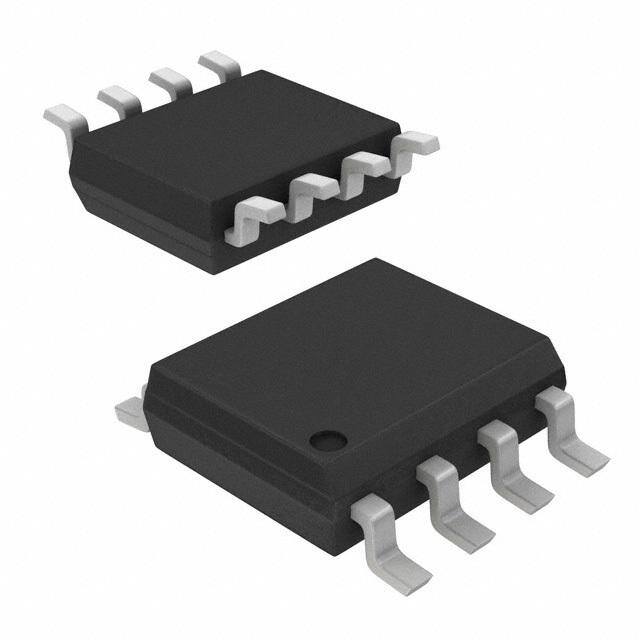
 Datasheet下载
Datasheet下载